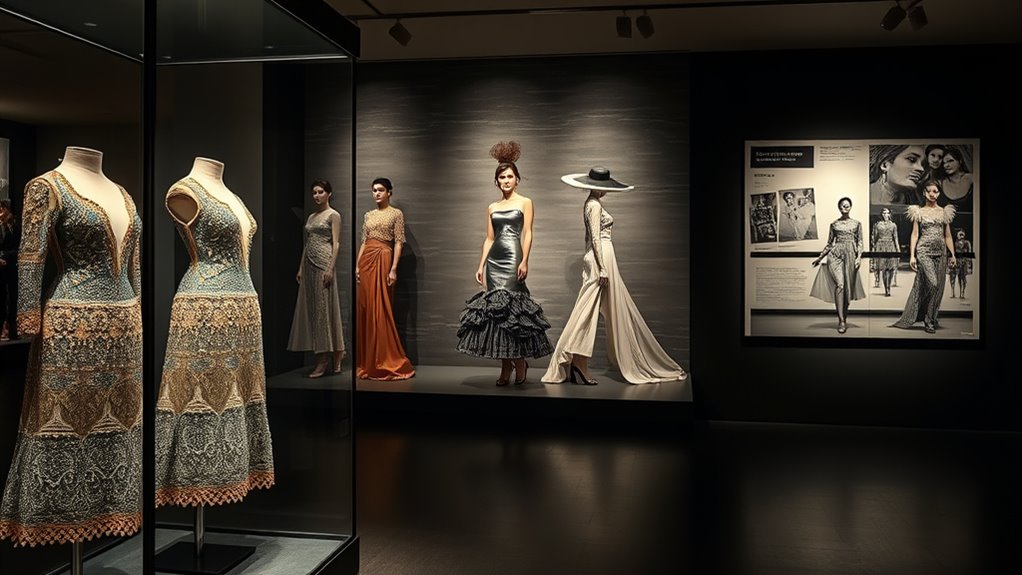Luxury fashion houses started as symbols of aristocratic status, emphasizing craftsmanship and social hierarchy. Over time, innovations during the Enlightenment and industrialization expanded styles and made luxury more accessible. Iconic brands like Chanel and Dior rose during this golden age, blending exclusivity with mass production. Today, they balance heritage with digital strategies, reaching wider audiences. If you keep exploring, you’ll discover how these brands continuously adapt to modern trends while preserving their prestige.
Key Takeaways
- Originated in aristocratic societies, where clothing symbolized social status and wealth through elaborate textiles and designs.
- Influenced by the Enlightenment and industrialization, which expanded textile trade and introduced mass production, making luxury more accessible.
- The rise of iconic fashion houses like Chanel and Dior established brand identities centered on craftsmanship and innovation.
- Shift towards broader consumer access with digital platforms, allowing entry-level luxury products and global reach.
- Embraced digital transformation via immersive marketing, social media, and virtual tools to engage new audiences and modernize luxury branding.
Tracing the Origins: Aristocracy and Medieval Influences
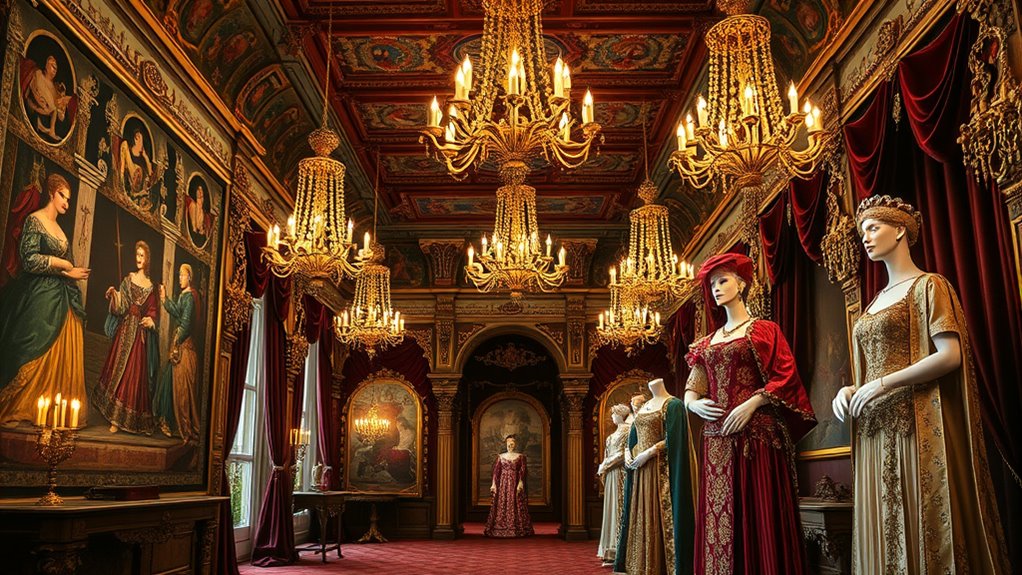
The origins of luxury fashion can be traced back to aristocratic societies, where clothing served as a powerful symbol of status and wealth. In medieval Europe, aristocratic fashion communicated social hierarchy through elaborate garments worn by the nobility. Royal courts became centers of fashion innovation, with artisans creating custom pieces that showcased prestige and exclusivity. These garments often featured luxury textiles like fine silk, velvet, and embroidery, demonstrating high-quality craftsmanship. Long, ornate robes and detailed embellishments distinguished the aristocracy from commoners, reinforcing social ranks. This tradition of using clothing to signify privilege laid the foundation for modern luxury fashion, emphasizing craftsmanship, exclusivity, and social status. Over time, the importance of social hierarchy in fashion design evolved into a focus on branding and exclusivity that defines today’s luxury houses, which continue to draw inspiration from these historic symbols of aristocratic prestige. Additionally, the role of craftsmanship became central, with artisans honing their skills to produce garments that embodied refinement and uniqueness, further elevating the status of luxury fashion. As fashion evolved, the emphasis on luxury textiles and detailed embellishments solidified the connection between clothing and social distinction.
Enlightenment and Industrialization: Shaping Modern Luxury
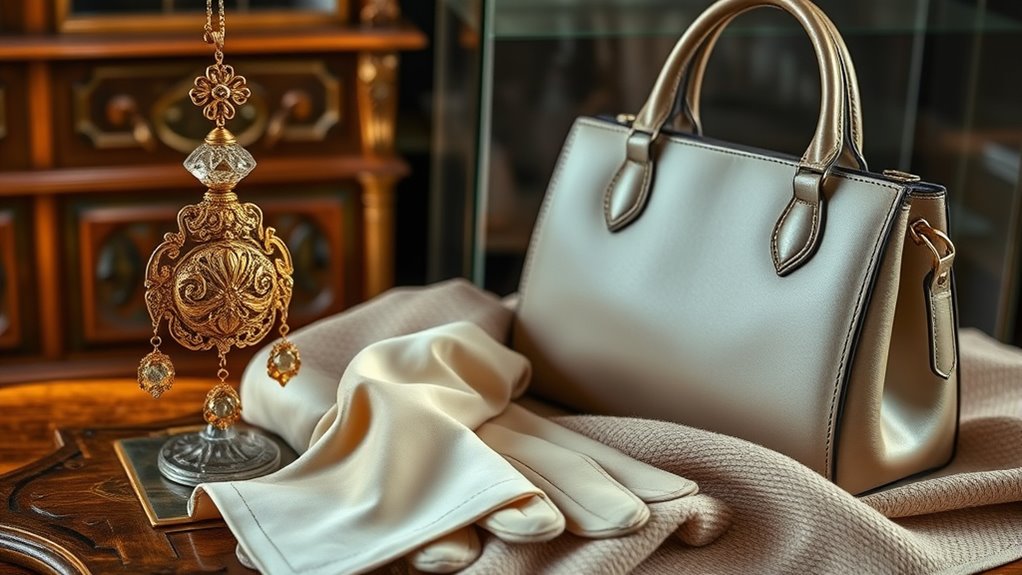
As society shifted during the Age of Enlightenment, fashion became more than just a symbol of aristocratic privilege—it reflected personal identity and societal change. The growing textile trade and availability of diverse materials encouraged expressive, individualistic styles. During the industrial revolution, mass production techniques made luxury fashion more accessible, but high-end artisans continued to elevate craftsmanship through bespoke tailoring and intricate craftsmanship. This period also solidified the link between luxury fashion and social hierarchy, as clothing signified status and prestige. The rise of haute couture marked the birth of modern designer houses, emphasizing artistry alongside functionality. Industrialization transformed luxury fashion from exclusive craftsmanship into a broader social marker, shaping the foundations of contemporary fashion houses and defining luxury as a reflection of both societal rank and personal expression. Additionally, the development of self-watering and waterless planters in modern gardening showcases how innovation continues to influence lifestyle and personal expression beyond fashion.
The Golden Age and the Rise of Fashion Houses
During the early to mid-20th century, fashion houses like Chanel, Dior, and Louis Vuitton rose to prominence, transforming luxury brands into symbols of prestige and craftsmanship. This Golden Age of fashion saw these houses become centers of innovation, crafting iconic fashion and redefining style. Dior’s “New Look” in 1947 revolutionized femininity and luxury aesthetics, emphasizing haute couture and meticulous craftsmanship. As the industry evolved, fashion houses began formalizing their brand identities, developing signature designs and logos that signified exclusivity. Haute couture and ready-to-wear collections during this era created aspirational lifestyles, elevating these luxury brands to global icons. This period laid the foundation for modern luxury, emphasizing craftsmanship, prestige, and the power of iconic fashion to define social and cultural influence. The increasing importance of brand identity helped solidify their status as cultural symbols worldwide, as the consistency of their design language became a hallmark of their success. Furthermore, the adoption of distinctive visual branding strategies played a crucial role in establishing lasting recognition and emotional connection with consumers. Additionally, the use of natural and high-quality materials in their creations reinforced their reputation for craftsmanship, ensuring durability and timeless appeal.
Contemporary Shifts: From Exclusivity to Broader Accessibility
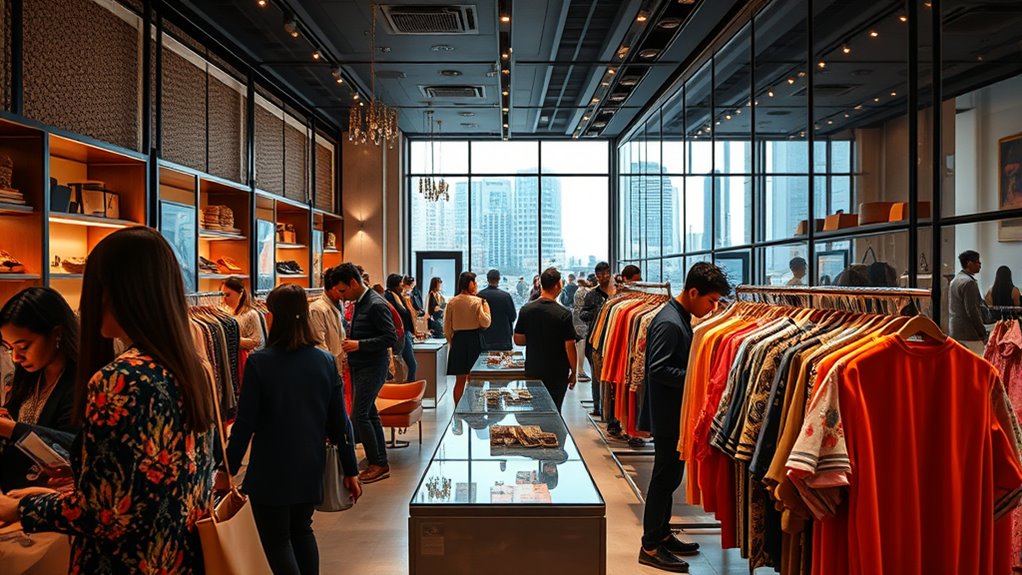
In recent decades, luxury fashion brands have shifted their strategies from strict exclusivity toward broader accessibility, aiming to reach a wider audience without diluting their prestige. This move has allowed luxury brands to expand their customer base while preserving their heritage. You’ll notice brands now offer entry-level products like fragrances and accessories to attract new consumers. Brand expansion is also driven by digital platforms, which have democratized luxury shopping and increased accessibility worldwide. This digital shift has significantly lowered the barriers to entry for many consumers, contributing to a broader consumer base. Additionally, the adoption of digitalization has enabled brands to showcase their collections globally, reaching markets that were previously inaccessible. This shift balances maintaining high-end exclusivity with making products more affordable. To summarize:
- Luxury brands develop entry-level products for broader consumers
- Digital platforms enable easier access to luxury items
- Democratization of luxury attracts a global audience
- Affordability supports brand expansion without sacrificing prestige
- Introducing for sale 100 strategies helps brands reach new markets while maintaining their exclusivity.
Pioneering Brands and Their Digital Transformation Journeys
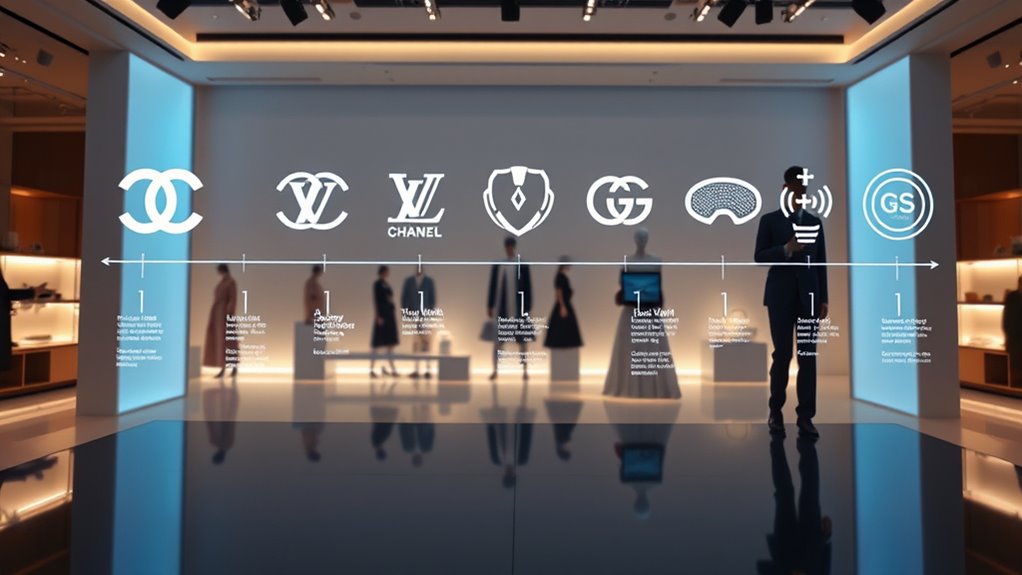
Luxury fashion brands have rapidly transformed their digital strategies to stay relevant in a competitive market. They leverage digital transformation to boost their online presence, engaging audiences through innovative digital marketing and immersive content. Gucci, for example, launched Gucci Garden Archetypes on Instagram in 2018, blending storytelling with immersive content to attract younger consumers. Louis Vuitton pioneered live-streamed runway shows in 2010, making high fashion accessible via digital channels and setting industry standards. Burberry revitalized its digital presence with campaigns like “Art of the Trench,” showcasing customer photos on social media. These brands now emphasize e-commerce, virtual try-on tools, and social media to enhance online shopping experiences. Their journeys exemplify how pioneering brands stay ahead by integrating digital transformation into core brand strategies. Additionally, many brands are exploring astrological themes to connect with consumers on a more personal level.
Frequently Asked Questions
What Was the First Luxury Fashion House?
You might wonder which was the first luxury fashion house. Louis Vuitton, founded in 1854 in Paris, holds that title. It started as a trunk and luggage maker, innovating with flat-topped trunks and creating a recognizable monogram to prevent counterfeiting. Louis Vuitton set the standard for future luxury brands by blending craftsmanship, exclusivity, and branding, shaping the modern concept of a luxury fashion house.
What Are the Major Milestones in the Evolution of the Fashion Industry?
You see, the major milestones in fashion history include the founding of iconic houses like Louis Vuitton and Chanel, which revolutionized craftsmanship. Then, the shift to ready-to-wear made luxury more accessible. The rise of digital platforms expanded your options globally. Recently, sustainability has become a key focus. These milestones show how you, as a consumer, experience constant innovation while respecting tradition and ethical practices in fashion.
What Is the History of Fashion Houses?
You might think fashion houses are just brands, but their history is rich and transformative. Starting in the 19th century, designers like Worth pioneered haute couture, blending art with craftsmanship. As icons like Chanel and Dior emerged, they became symbols of luxury and cultural influence. Today, these houses expand globally, blending tradition with innovation, proving that fashion isn’t just about clothes — it’s about shaping identity and inspiring emotion.
Who Is Older, Chanel or Hermès?
You want to know who’s older, Chanel or Hermès. Hermès was founded in 1837 by Thierry Hermès, making it over 70 years older than Chanel, which started in 1910 by Coco Chanel. Hermès began as an equestrian harness workshop, while Chanel initially focused on millinery and fashion. So, if you’re comparing age, Hermès holds the title for being the older luxury fashion house.
Conclusion
Now, as you see luxury fashion’s journey from aristocratic whispers to global digital buzz, it’s ironic how exclusivity has blurred into accessibility. You might imagine a humble street vendor selling haute couture or a royal crown on a smartphone. Yet, despite the crowd, the essence of luxury remains elusive, shimmering like a distant star — beautiful, but impossible to truly grasp. After all, isn’t the chase for rarity what keeps it shining?
